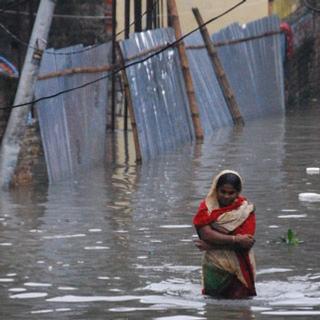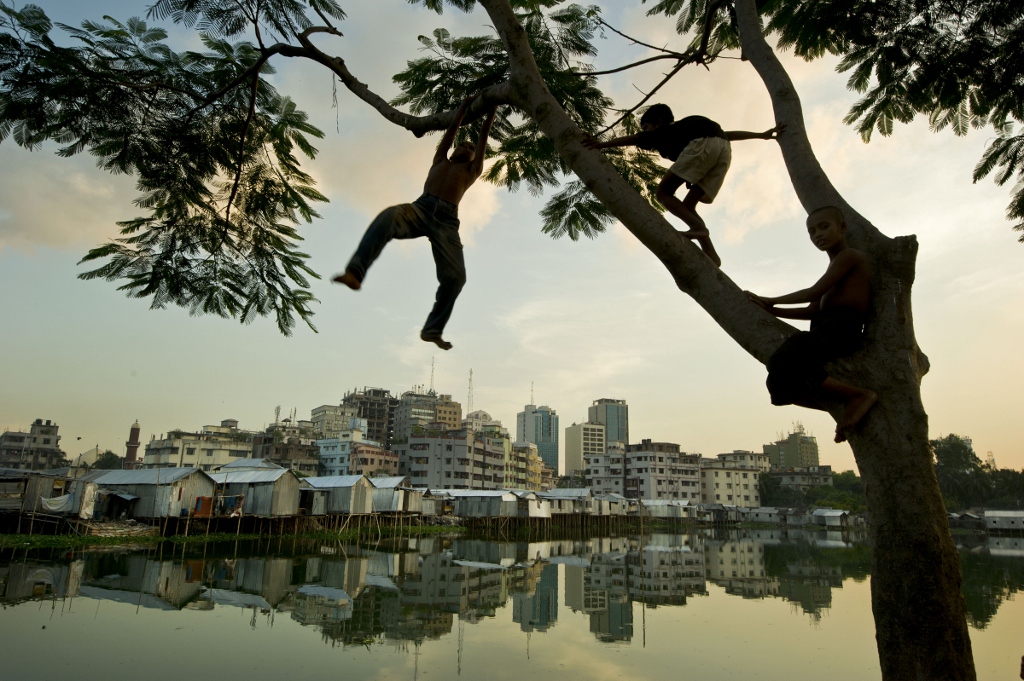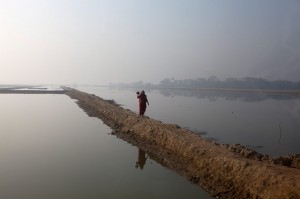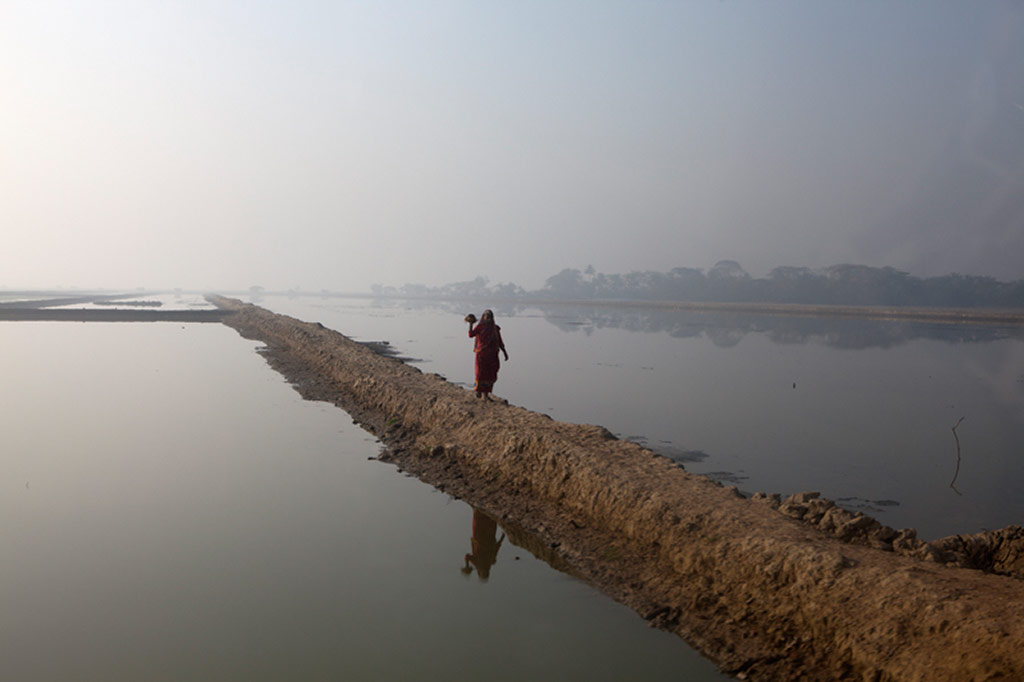In Dhaka, climate change refugees are moving from the countryside and into squalid slums due to repeated monsoonal floods that have rendered traditional farmland unusable. A documentary by Ami Vitale from the Knight Center for International Media wades through the floods, looking for solutions.
httpvh://youtu.be/TEDX2HFiVuY
About the film Bangladesh: A Climate Trap: Scientists predict that climate change could lead to a rise in sea levels that would flood at least 17 percent of Bangladesh and create around 20-35 million refugees by 2050. Around the world, experts concur Bangladesh is on the frontlines of climate change and the country faces a double threat: rising sea levels as a result of the melting ice caps and glaciers, and as the world warms, more extreme weather patterns. They say the monsoon rains in the region are concentrating into a shorter period, causing a cruel combination of more extreme floods and longer periods of drought.
STORY: Philippines: Hope and Healing After Super Typhoon Haiyan


John Vidal in the Guardian UK: Storms of this intensity historically happen in Bangladesh once every 20 to 30 years. But two “super-cyclones” in two years, followed by a narrow escape when super-cyclone Nargis killed 100,000 people in nearby Burma a year later, convinced many sceptics in government that climate change was happening and Bangladesh’s very survival was at stake.
In the capital of Dhaka, the impact is already being felt, with some half a million migrants arriving in the city each year. 40,000 people live on one square kilometer here, making it one of the most densely populated places on the planet. These “climate change refugees” are pouring mostly into squalid slums and the biggest reason for moving is environmental degradation. Alam Mia is like millions of others who have been forced to make the gridlocked capital of Dhaka his home. We follow his journey as he leaves his family and familiarity of home to search for a livelihood in the crowded capital. To him, Dhaka feels more like a foreign country than his native lands. To his family at home, it is a struggle to survive. The irony is that Alam Mia, like millions like him in Dhaka, is trapped. His move to the city is not a beginning full of possibilities for the future. Korial – Dhaka’s largest slum signifies the bitter culmination of his dreams. There is no path ahead.
Syed Zain Al-Mahmood in the Guardian-UK: Fishing used to be an important economic activity and a critical source of protein for the people of the flood plains. But these days, that option no longer exists. “The rivers and lakes are off limits to us because the government has leased them out to big contractors,” says Mili’s father, Kalam Mia. “We can’t catch fish any more. So if the crops fail due to a flood, we have to starve.”


Anwar Ali – Assessment and Adaptation Study, “Climate Research”: In the western coastal area of Bangladesh lies a large mangrove forest. Although that area is almost flat, damage due to storm surges there is still much less than it is in other areas that have less mangrove coverage. Thus one of the most immediate and useful adaptation strategies should be to protect the mangrove forest from denudation and implement a massive afforestation program all along the coastal belt.


The situation is at once ironic and unjust. The poorest are the most affected by climate change but they are the least responsible for it. With more informed choices we can alter, not only the fate of Bangladesh, but the whole planet. The country’s future, however, and the fate of its impoverished millions, will be determined not necessarily by rising sea levels, but by the behavior of its citizens, neighbors and outside powers. Whether it becomes one of the great human tragedies of our time or a model for the future depends on these choices; what happens next is in our hands. Right now Bangladesh appears far away, but our planet’s ecosystem is an intricate web and the lessons learned here, are important for all of humanity.
httpvh://youtu.be/MoMifNO4w6s
GlobalPost documentary on one of the world’s the fastest growing cities, Dhaka, Bangladesh.
Erik German and Solana Pine in GlobalPost: Mass migration, booming populations and globalized trade are swelling cities worldwide, but these forces are perhaps more powerfully concentrated in Dhaka than anywhere on earth — offering a unique window on an urban planet soon to come.
“You are seeing the early future of the world, which is not a very pleasant thought,” said Atiq Rahman, a Dhaka climate and migration researcher who heads the Bangladesh Centre for Advanced Studies. Explosive growth in cities like Dhaka, he said, has created “a cluster of demographic chaos.”









